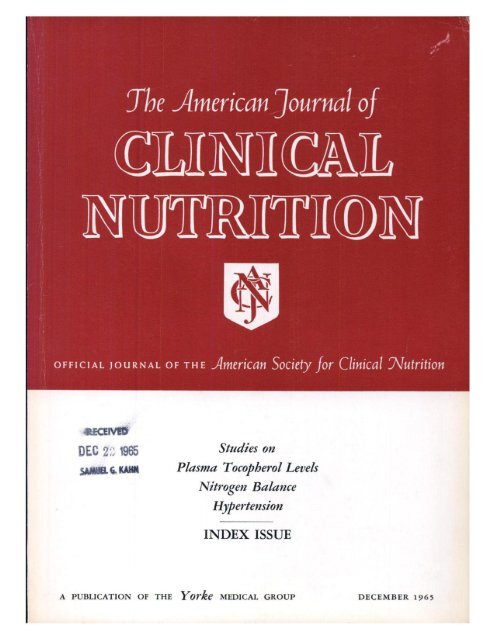One-carbon metabolism, insulin resistance, and fecundability in a Singapore prospective preconception cohort study
IF 6.5
1区 医学
Q1 NUTRITION & DIETETICS
引用次数: 0
Abstract
Background
One-carbon metabolism, which consists of the folate cycle, methionine cycle, and trans-sulphuration pathway, is associated with nucleotide synthesis. However, the association between one-carbon metabolites, metabolic status, and reproductive health remains poorly understood.
Objectives
We examined the association between the one-carbon cycle plasma metabolites and fecundability and determined whether it is modified by metabolic health status, as assessed by insulin resistance (IR).
Methods
This prospective cohort study utilized data from the Singapore PREconception Study of long-Term maternal and child Outcomes. Fasting blood samples were collected, and one-carbon cycle metabolites were measured. Fecundability was measured by time to pregnancy in menstrual cycles within a year of enrollment. We identified patterns in plasma one-carbon cycle metabolites using principal component (PC) analysis. We estimated fecundability ratios (FRs) and confidence intervals (CIs), with confounder adjustment using discrete-time proportional hazards models. IR was determined using the Homeostatic Model Assessment 2 Insulin Resistance score, classified into lower IR (<0.65) and higher IR (≥0.65). The role of IR was examined through interaction tests and stratification.
Results
We identified 3 one-carbon cycle PCs. PC1, characterized by higher folate and lower homocysteine concentrations; PC2, characterized by higher concentrations of dimethylglycine, choline, methionine, and betaine; and PC3, characterized by higher concentrations of vitamins B2, B12, and B6. Each z-score increase in PC1 was associated with a 17% increase in fecundability (FR: 1.17; 95% CI: 1.03, 1.33). The association between PC1 and fecundability was more evident in women with lower IR (FR: 1.30; 95% CI: 1.08, 1.57) but was attenuated in those with higher IR (FR: 1.09; 95% CI: 0.92, 1.30), with a P-for-interaction of 0.127. PC2 and PC3 were not associated with fecundability.
Conclusions
Our findings suggest that higher folate and lower homocysteine concentrations, which reflected the interlinked folate and methionine cycles, were associated with higher fecundability in preconception women with lower IR but less so in those with higher IR.
Clinical Trial Registration: This trial was registered at ClinicalTrials.gov as NCT03531658 (https://www.clinicaltrials.gov/study/NCT03531658).
新加坡前瞻性孕前队列研究中的单碳代谢、胰岛素抵抗和生育能力。
背景:由叶酸循环、蛋氨酸循环和转硫途径组成的单碳代谢与核苷酸合成有关。然而,单碳代谢物、代谢状态和生殖健康之间的关系仍然知之甚少。目的:研究单碳循环血浆代谢物与生育能力之间的关系,并通过胰岛素抵抗(IR)评估代谢健康状况是否对其进行修饰。方法:这项前瞻性队列研究利用了新加坡长期母婴结局孕前研究的数据。采集空腹血液样本,测量单碳循环代谢物。可生育能力是通过一年内月经周期的怀孕时间来衡量的。我们使用主成分分析确定了血浆单碳循环代谢物的模式。我们估计了生育比(FRs)和置信区间(ci),并使用离散时间比例风险模型进行了混杂校正。IR使用稳态模型评估2胰岛素抵抗评分来确定,分为低IR(结果:我们确定了三个一碳循环主成分(PCs)。PC1,特点是叶酸水平较高,同型半胱氨酸水平较低;PC2,特征是二甲基甘氨酸、胆碱、蛋氨酸和甜菜碱水平较高;PC3,其特征是维生素B2、B12和B6水平较高。PC1每增加一个z得分,受精率增加17% (FR 1.17;95% ci 1.03, 1.33)。在IR较低的女性中,PC1与生育能力之间的关联更为明显(1.30;1.08, 1.57),但在IR较高的人群中减弱(1.09;0.92, 1.30),交互作用p值为0.127。PC2和PC3与生殖力无关。结论:我们的研究结果表明,较高的叶酸水平和较低的同型半胱氨酸水平,反映了叶酸和蛋氨酸循环的相互联系,与低IR的孕前妇女的高生育能力有关,但与高IR的孕前妇女的高生育能力有关。临床试验注册编号和获取网站NCT03531658, https://www.Clinicaltrials: gov/study/NCT03531658。
本文章由计算机程序翻译,如有差异,请以英文原文为准。
求助全文
约1分钟内获得全文
求助全文
来源期刊
CiteScore
12.40
自引率
4.20%
发文量
332
审稿时长
38 days
期刊介绍:
American Journal of Clinical Nutrition is recognized as the most highly rated peer-reviewed, primary research journal in nutrition and dietetics.It focuses on publishing the latest research on various topics in nutrition, including but not limited to obesity, vitamins and minerals, nutrition and disease, and energy metabolism.
Purpose:
The purpose of AJCN is to:
Publish original research studies relevant to human and clinical nutrition.
Consider well-controlled clinical studies describing scientific mechanisms, efficacy, and safety of dietary interventions in the context of disease prevention or health benefits.
Encourage public health and epidemiologic studies relevant to human nutrition.
Promote innovative investigations of nutritional questions employing epigenetic, genomic, proteomic, and metabolomic approaches.
Include solicited editorials, book reviews, solicited or unsolicited review articles, invited controversy position papers, and letters to the Editor related to prior AJCN articles.
Peer Review Process:
All submitted material with scientific content undergoes peer review by the Editors or their designees before acceptance for publication.

 求助内容:
求助内容: 应助结果提醒方式:
应助结果提醒方式:


